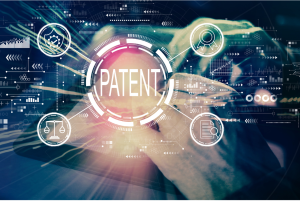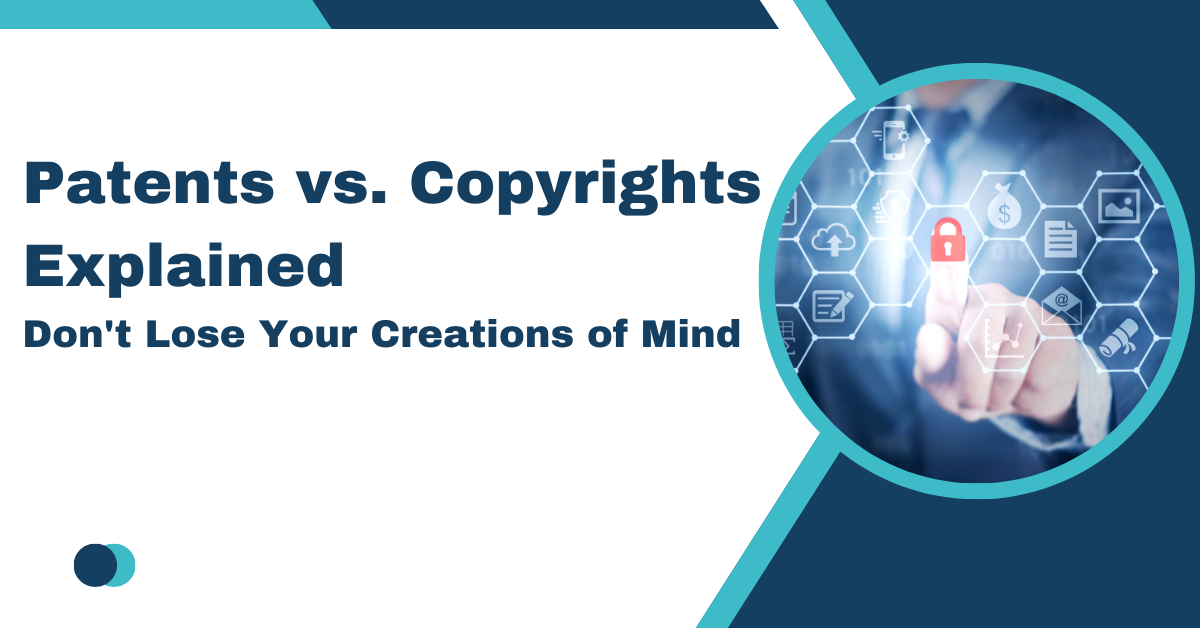Don’t Lose Your Creations of Mind: Patents vs. Copyrights Explained
Correcting a Common Misconception
The worlds of innovation and creativity rely heavily on intellectual property rights. Yet, even among experts, a persistent misconception muddies the waters: the belief that patents and copyrights are interchangeable. To safeguard your brilliant ideas and ensure they benefit you, it’s vital to understand the distinct purposes of these legal tools.
Patents: Protecting Inventions that Solve Problems

A patent grants an inventor exclusive right to their novel, useful, and non-obvious invention for a limited time. In exchange for this temporary monopoly, the inventor must publicly disclose the details of their invention. There are three main types:
- Utility patents: Cover new machines, processes, manufactured objects, or compositions of matter (like a new drug formula).
- Design patents: Protect the unique, non-functional appearance of an object (like the iconic shape of a Coca-Cola bottle).
- Plant patents: Protect newly invented or discovered asexually reproduced plant varieties.
Copyrights: Protecting the Expression of Idea

Copyright protects original works of authorship that are fixed in a tangible medium. This means that as soon as you write a poem, paint an image, or compose a song, it’s likely protected by copyright. Copyright grants you exclusive rights to:
- Reproduce your work
- Create derivative works (like translations or movie adaptations)
- Distribute copies
- Publicly perform or display your work
Key Differences: Where Function Meets Expression
- Subject Matter: Patents protect how something works, fundamentally addressing a technical problem. Copyrights protect the way an idea is expressed, such as in a painting or a piece of software code.
- Novelty vs. Originality: Patents demand absolute novelty – the invention must be truly new. Copyrights require originality, meaning the work must be independently created and possess a touch of creativity.
- Idea vs. Expression: Patents protect the application of an idea, while copyrights protect the specific way that idea is expressed. You cannot copyright the concept of a lightbulb, but you could copyright the artistic design of a light fixture.
When the Lines Blur: Areas of Overlap
In some cases, patents and copyrights might intersect:
- Computer Software: Code can be copyrighted as a written work, while the underlying algorithms and functionality might also be patentable.
- Industrial Designs: An innovative and visually striking object, like a uniquely shaped chair, may qualify for both a design patent (protecting its appearance) and copyright (protecting its artistic elements).
Why You Should Care?
Choosing the wrong type of protection carries risks. A patent requires public disclosure, so if your invention isn’t truly eligible, others could use your idea. Relying solely on copyright for a functional invention, or vice versa, leaves you vulnerable.
The Right Protection for Your Work
Understanding the fundamental differences between patents and copyrights empowers you to make the right decisions. If you’ve created something groundbreaking and functional, a patent offers the strongest protection. If you’ve produced an original work of authorship, copyright is your essential shield. In complex scenarios, both forms of protection might be necessary.
Preserve your inventions and innovations. Elevating Excellence Through Strategic Protection and Intellectual Prosperity. Start Building Your Strong IP Portfolio Today.
Contact us for more details :
he***@ip***.com
Visit our website : https://ip-fy.com/





